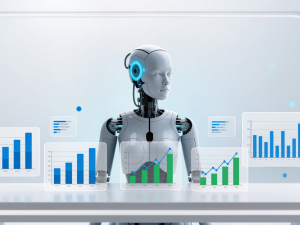By 2025, something surprising has happened in the world of technology. There are more digital jobs than ever: cloud engineers, cybersecurity analysts, data specialists, AI technicians yet employers everywhere are saying the same thing: they can’t find enough job-ready talent.
It’s not that people aren’t interested in tech. Students are enrolling in IT programs, coding bootcamps are packed, and online certifications are more accessible than ever. The real issue is the widening gap between what companies need and what most candidates can actually do on day one.
Technology is evolving at a pace that traditional learning simply can’t keep up with. New cloud tools appear every quarter. AI workflows shift every few months. Cybersecurity threats change almost daily. For employers, this means relying on job seekers who may have the theory, but not the hands-on skill set needed to solve real problems.
This gap isn’t just an inconvenience, it’s reshaping how companies hire, how teams operate, and how students prepare for their careers. Businesses are doubling their tech investments, yet struggling to build teams that can support those ambitions. For young learners watching all of this unfold, the message is becoming increasingly clear: your skills matter more than your degree.
The rest of this blog unpacks why the gap keeps growing, the skills employers desperately need, and how students can future-proof themselves in a world where technology refuses to slow down.
The Heart of the Problem – What’s Causing the Gap?
If you ask employers why hiring feels so difficult in 2025, you’ll hear a pattern. It’s not a lack of applicants, it’s a lack of applicants with the right skills. The gap widens every year because the technology powering businesses evolves far faster than the training most people receive.
A big part of the disconnect comes from traditional education pathways. Degrees teach theory, frameworks, and foundational knowledge, but they often lag behind real-world tools. A student might graduate with high marks yet struggle to configure a cloud environment, secure a network, or interpret real-time data logs tasks that employers depend on every single day.
Meanwhile, industries themselves are transforming. Companies that once relied on simple IT support now work with cloud-native systems, automation tools, and AI-driven workflows. This sudden jump in complexity means employers need professionals who can not only understand technology, but work hands-on with it instantly.
Another factor is speed. Tech innovations move at a pace no classroom can match. By the time one tool becomes part of a curriculum, three newer versions may have already replaced it in the industry. Job seekers who depend solely on formal education are left with gaps they didn’t even know existed.
There’s also the mindset shift. Employers want people who continue learning long after they land a job. In a field where tools update monthly and best practices change constantly, a “learn once” approach no longer works. Continuous learning isn’t optional, it’s the new baseline for staying relevant.
All of this creates a simple but serious challenge: employers need job-ready skills today, while many learners are still equipped for yesterday. And as cloud, cybersecurity, data, and AI expand even further, this disconnect becomes more obvious and more urgent.
The Skills Employers Are Struggling to Find
Talk to any hiring manager in 2025 and you’ll notice the same pattern: the most in-demand skills are also the hardest to find. The tech world has shifted dramatically, and the jobs growing fastest are the ones where talent is scarcest.
Cloud computing is at the top of that list. Businesses have moved their systems to platforms like AWS, Azure, and Google Cloud at a speed nobody predicted. But running cloud infrastructure isn’t simple. It requires hands-on experience with deployments, security configurations, automation, and cost optimization. Many applicants understand cloud theory, but far fewer can actually build or troubleshoot a live environment.
Cybersecurity has an even bigger shortage. Every company depends on secure systems, yet there aren’t enough people who can defend networks, manage incidents, or respond to threats. Employers are searching for talent who understand modern security tools, authentication methods, and protective strategies skills that come from practice, not just lectures.
Artificial intelligence and machine learning have exploded across industries, creating demand for professionals who can work with training data, understand models, and collaborate with AI-powered tools. But the speed of innovation in AI means the industry evolves faster than most learners can keep up. Employers need talent who can adapt quickly and think critically about how AI systems behave in real-world environments.
Data science and analytics remain core to almost every modern company. Organizations collect vast amounts of information, but extracting insights from that data requires specialized skills. Analysts and engineers must understand data pipelines, storage systems, and interpretation techniques and they must do all of this while keeping accuracy and privacy in mind.
Even traditional fields like software and web development have grown more complex. Developers are now expected to work across multiple frameworks, integrate AI features, build responsive interfaces, and develop applications for mobile-first environments. Knowledge alone isn’t enough. Employers want candidates who can work confidently with modern tools from day one.
Together, these areas form the backbone of the digital economy. Yet, in each one, the supply of job-ready talent falls short of demand. This is why the skills gap keeps widening: technology is accelerating, but preparation isn’t keeping pace.
Why Aren’t Degrees Enough Anymore?
For years, earning a degree was seen as the main path into a stable technology career. And while a solid academic foundation still matters, 2025 has made one thing clear: a degree alone no longer guarantees that someone is ready for real IT work.
The reason isn’t a lack of intelligence or effort from students. It’s the pace of change. University curricula often take years to update, but the tools companies rely on evolve every few months. By the time someone graduates, the technologies used in the industry may already look different from what they studied.
Employers now expect candidates to be comfortable with real environments configuring cloud platforms, securing networks, analyzing data, or working with AI-driven tools. These aren’t skills that can be memorized from a textbook. They come from actually doing the work, making mistakes, and learning through experience.
This doesn’t mean degrees have lost value. They provide structure, critical thinking, and foundational knowledge. But when it comes to getting hired, companies prioritize practical skills. They want to see whether a candidate can deploy an application, protect a system, or troubleshoot an issue under pressure.
That’s why more employers are moving toward a skills-first mindset. Instead of focusing on where someone studied, they care about what the person can build, fix, or manage right now. Certifications, hands-on labs, project portfolios, internship experience these elements speak louder than a transcript.
Job seekers who rely only on formal education are finding themselves unprepared for today’s expectations. Meanwhile, those who combine academic learning with real-world practice are stepping into roles faster and growing in their careers more confidently.
The truth is, the tech world no longer rewards knowledge alone. It rewards the ability to apply concepts, adapt to new tools, and keep learning even after a job offer. In a field that changes constantly, that mindset has become just as important as any diploma.
How the Industry Is Responding?
As the skills gap continues to widen, companies aren’t sitting still. The pressure to hire job-ready talent has pushed organizations to rethink how they build and support their teams. In 2025, the response has become much more strategic, and in many ways, far more practical than before.
One of the biggest shifts has been the move toward hands-on training. Employers have realized that theory isn’t enough to prepare someone for a modern IT environment. So instead of relying solely on traditional hiring pipelines, companies are working with platforms that provide real-world labs, simulations, and scenario-based learning. It’s training built around doing the job, not just learning about it.
Upskilling and reskilling have also become essential. Rather than waiting for the “perfect candidate” to appear, more businesses are investing in the people they already have. Teams are being trained in cloud technologies, cybersecurity frameworks, automation tools, and data workflows. Employees who once worked in support or administrative roles are transitioning into full-fledged technical positions because companies are finally giving them the opportunity to grow.
The definition of a workforce has changed as well. Instead of relying only on full-time, in-office staff, organisations now use hybrid talent models that blend permanent employees with contractors, remote specialists, and distributed teams from different regions. This gives companies access to skills they might not find locally and it gives job seekers more flexibility in how and where they work.
To speed things up even further, many companies are expanding their sourcing channels. They’re recruiting talent globally, collaborating with training providers, and partnering with organizations that specialize in connecting employers with job-ready professionals. This approach helps them fill roles faster while also improving the diversity of their teams.
Together, these changes show a shift in mindset: employers no longer expect job seekers to arrive fully prepared. Instead, they’re building ecosystems where learning never stops, growth is continuous, and practical skills are a shared responsibility between the individual and the organization.
And for students watching these changes unfold, the message is encouraging. The industry is not just demanding skills, it’s creating more paths to develop them.
What This Means for Job Seekers?
For anyone preparing to enter the IT field in 2025, the growing skills gap might sound intimidating but it’s actually an opening. When employers struggle to find job-ready candidates, the advantage shifts toward learners who are willing to build practical skills and stay adaptable.
The first thing this shift highlights is the value of hands-on experience. Employers want people who can troubleshoot in real time, configure systems confidently, and understand how different technologies fit together. That kind of readiness doesn’t come from memorizing notes. It comes from working through real projects, experimenting with tools, and gaining practical exposure to platforms used in the industry.
Adaptability has also become a defining trait. Tools update, workflows evolve, and new systems appear constantly. Job seekers who treat learning as an ongoing part of their career, not just something they do before landing a job will always stay ahead. Continuous learning isn’t a bonus anymore; it’s the expectation.
Another important opportunity lies in exploring specialized fields. Areas like cloud computing, cybersecurity, AI systems, and data analytics offer strong growth, competitive pay, and long-term stability. These fields aren’t just trends; they form the backbone of nearly every modern organization. Choosing to specialize in one of them can make a candidate stand out quickly.
The shift in hiring also means job seekers don’t need to follow the old career playbook. Talent is now sourced globally, and hybrid teams have become normal. Someone with strong skills can build a career from almost anywhere. Opportunities exist far beyond local boundaries, opening doors that didn’t exist a few years ago.
In short, the widening skills gap isn’t a barrier, it’s a signal. It shows where the industry is heading and where motivated learners can grow the fastest. Those who focus on practical skills, stay curious, and embrace continuous learning will not only find opportunities but shape the future of IT itself.
The Role of Learning Platforms and Educators
As the demand for job-ready talent grows, learning platforms and educators have stepped into one of the most important roles in the entire conversation. They act as the bridge between fast-moving technology and the students trying to keep pace with it. In 2025, their mission has shifted from simply teaching concepts to preparing learners for real-world challenges.
Modern training platforms focus heavily on hands-on learning because that’s what employers value most. Instead of relying on long lectures or dense textbooks, students now work directly with cloud consoles, security tools, network environments, and data systems. They don’t just learn the theory behind a concept they experience what it feels like to solve problems just like an actual IT team would.
Educators play a crucial part too. They help students understand not just the how, but the why behind the tools they use. When a learner configures a virtual machine or analyses system logs, instructors guide them through the reasoning that makes the task meaningful. This combination of technical clarity and real-world context builds confidence and prepares students to think independently.
Another important contribution is helping students adapt to continuous learning. Good programs teach beyond the tool of the moment. They focus on core principles: security awareness, analytical thinking, troubleshooting, system design skills that remain valuable even as software and platforms evolve. This mindset prepares students for the long-term reality of tech careers, where learning never stops.
Learning platforms also make advanced training more accessible. Hands-on labs, virtual simulations, and self-paced courses give learners the ability to practice and grow regardless of location or background. Whether someone is starting fresh, transitioning careers, or building on what they already know, they have opportunities that were once limited to formal classrooms.
By combining guidance, real-world practice, and flexible access, educators and training platforms help close the skills gap one learner at a time. They create environments where students can prepare for the demands of today while building the resilience needed for tomorrow. In a world where technology shifts constantly, that kind of preparation is exactly what employers are looking for.
Conclusion – Building a Workforce Ready for Tomorrow
The widening digital skills gap isn’t just a headline, it’s a turning point. As technology accelerates, the world needs people who can keep up, adapt quickly, and think critically about the tools shaping modern life. Employers aren’t searching for perfection. They’re searching for readiness, curiosity, and the confidence to tackle real problems from day one.
The gap we see in 2025 doesn’t exist because talent is lacking. It exists because the world is changing faster than traditional learning can update. But that gap also reveals something promising: a huge opportunity for students who are willing to learn in new ways. Hands-on practice, real-world exposure, and continuous learning are no longer “extras” ; they’re the foundation of every strong IT career.
Platforms, educators, and learners now share a common mission: to build a workforce that’s prepared not just for today’s challenges, but for everything the next wave of innovation will bring. Whether it’s cloud systems, cybersecurity, AI tools, or data-driven decision-making, the world needs professionals who understand both the technology and the responsibility that comes with it.
So the real question isn’t whether the skills gap will continue, it’s this: will the next generation of learners rise to meet it?
FAQs
1. What skills are employers struggling to find in 2025?
Cloud computing, cybersecurity, AI systems, data analytics, and modern software development are the areas with the biggest talent shortages.
2. Do you still need a degree to get an IT job?
A degree helps, but employers now priorities hands-on skills, real projects, and certifications over classroom-only knowledge.
3. How can learners prepare for the changing tech landscape?
Practice regularly in real environments, stay curious, and build a habit of continuous learning to keep your skills sharp.
4. Which IT fields offer the best growth opportunities right now?
Cloud roles, cybersecurity positions, AI-driven work, and data-focused jobs continue to have the strongest demand and long-term stability.
5. Why is the digital skills gap widening?
Technology is evolving faster than traditional training programs, leaving many job seekers without the practical skills employers expect on day one.






